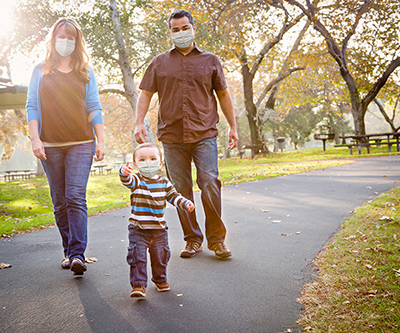
NICHD is committed to improving the health of infants and children.
Researchers funded by NICHD updated an online tool that provides information for clinicians and parents on outcomes for extremely preterm infants, who are born between weeks 22 to 25 of pregnancy (compared to 40 weeks for a full-term pregnancy). Many of these infants die soon after birth, despite receiving the best treatment available. Although some survive and reach adulthood largely unaffected, others will experience disability. Physicians and family members often must choose between aggressive treatment to save an infant’s life or comfort care, which meets the infant’s basic needs but forgoes painful medical procedures unlikely to benefit the infant. The online tool uses five factors to estimate infant survival and neurological impairment to aid healthcare providers in their assessment.
NICHD-funded researchers are also studying the effects of breastfeeding and the specific components of breastmilk on infant health. One team found that a component of human milk, called human milk oligosaccharides (HMOs), of which there are more than 150 types, may influence a child’s growth from infancy through early childhood. The study found that breastmilk from mothers of taller and heavier infants and children tended to have less diverse HMO composition, higher concentrations of an HMO called 2’FL, and lower concentrations of another HMO called LNnT. If the findings are confirmed in larger studies, healthcare providers may one day improve nutrition by refining HMO composition in maternal milk or by providing specific HMOs to infants to support healthy growth and development.
Understanding the effects of screen time is another important issue for parents and healthcare providers. An NICHD-supported study reported that screen time before bed may affect kids differently, depending on whether they have a particular personality trait. The study team found that nighttime electronic media use was linked to less sleep in children who scored lower on a measure of effortful control—the ability to override inappropriate impulses, focus attention, and complete difficult tasks. In contrast, bedtime screen use was not associated with sleep reduction in children who scored high in effortful control. The researchers theorized that children with low effortful control may have difficulty calming down after using media and have more difficulty falling asleep.
NICHD also supports research to prevent, treat, and reduce all forms of childhood trauma, including abuse and neglect. One team of NICHD-funded researchers conducted a survey of child forensic interviewers in all 50 states and the District of Columbia to sample the types of information that these professionals—who are trained to interview children about suspected maltreatment—want to have before interviewing children. These included their attitudes and beliefs about forensic interviews, the characteristics of their interviews, and their professional experiences. The team’s results provide a current snapshot of forensic interviewing and possibly a national benchmark to which local child advocacy centers can compare their practices. The results may also help provide guidance to courts about the important role of forensic interviews in substantiating children’s reports of abuse.
Finally, NICHD marked a 10-year milestone in its private-public partnership with the WALTHAM® PetCare Science Institute, a division of Mars, to explore the impact of interactions between animals and their human companions. This partnership established the scientific groundwork for a field of study called Human-Animal Interaction. Funding opportunities from the partnership launched multiple studies with participants ranging in age from infants to adolescents to young adults and their pets. The studies also measure the impact of therapy animals, and they include people with physical and intellectual disabilities and those in need of medical rehabilitation.
 BACK TO TOP
BACK TO TOP